If you’ve never ridden a motorcycle before or you just don’t “have” to have a brand new bike, then buying a used motorcycle is probably for you.
I had about 3 different used motorcycles before I broke down and shelled out the big bucks to buy my first new bike.
The used bikes allowed me to enjoy learning to ride instead of worrying about getting a little scratch on it. Since they were low cost and not in perfect shape, they gave me the opportunity to “tinker” with them and learn how they work.
New replacement parts were pretty cheap too since the bikes were older models and used parts from the junkyard were even cheaper.
Finding The Right Motorcycle
There are many websites that you can browse used motorcycles for sale. You can learn many things from the hundreds of ads.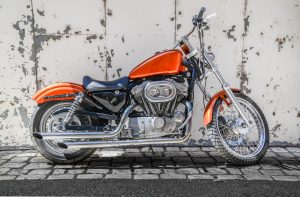
You can get a consensus of the selling price for a given bike. The more ads there are for a given motorcycle, the lower the price will be.
If the bike has been in production for a while, you may be able to get an idea of how the bike depreciates if there are multiple ads for the same bike but spanning multiple years.
Once you’ve decided on a potential bike to buy, check websites like Kelly Blue Book. Kelly Blue Book is a listing of what bikes with those same characteristics are selling for across the nation.
It will list the typical asking price and selling price for a bike of that same year, mileage, and condition. It’s a great negotiating tool as well if the seller is asking too high of a price.
Setting Up The Meeting
Give the seller a call. Set up a time and place to meet the seller. Always make sure to check out the bike DURING THE DAY!
This is critical. Inspecting in the dark could allow you to miss vital problems the bike may have.
Inspecting The Bike
Inspecting the potential new bike is the most important part of the exercise. Missing some obvious signs of damage or abuse can lead to potentially expensive repair bills down the road.
Missing them could also allow you to pay too much for a bike, or worse, lead to a possible crash.
One of the most important things to bring with you to inspect a bike is a friend. The best scenario is a friend who is an experienced biker or better yet, a bike mechanic.
They can help point out things that you may miss or not even be aware that they are a potential issue.
Even if your friend isn’t motorcycle savvy, they can still be very beneficial to point out things that may appear irregular or help you stick to your strategy and price budget.
They can also help you write down things that you find so that during the price negotiations, these items can be used to help you drive down the selling price.
Having said that, let’s get to the details!
Tires
There are a number of things to look for while inspecting tires. Make sure that the tread looks good. This is very similar to inspecting car tires.
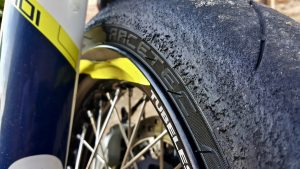
However, they need adequate tread on the center and the edges. If the center is balding, time to replace. Check for dry rot or cracking.
The cracking can be seen in between the treads. This happens if a tire is very old or has been sitting for a long time.
Walk the bike along a few feet while you or your friend look for flat spots or irregular tread wear. Anything unusual? Time to replace.
A front tire will run about $100 – $150 to replace. A back tire will run about $120 – $180 to replace on most street bikes. Ask the owner how many miles are on the tires. If he’s unsure, inspect extra carefully!
Chains
Chain health is equally essential. If a chain should snap at highway speeds, it can very easily wrap around the rear sprocket and lock up the rear tire!
Yes, that’s like slamming on the brakes at highway speeds only you won’t know what hit you! Check for obvious stuff like rusted links or pieces of rubber hanging out between the links.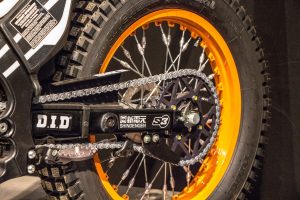
This can happen to a worn out o-ring chain. O-ring chains have rubber seals around the links to help seal in lubricants to extend the life of the chain.
Once these deteriorate, so will the chain’s life. Another thing to check is to see if the chain is stretched. Go to the rear sprocket and check how the chain links are seating in the sprocket.
If it seems like the link isn’t sitting perfectly in the valley between each tooth, the chain may be stretched. If the chain is loose, it doesn’t necessarily mean that it’s stretched.
It may just need to be tightened. If the chain does need to be replaced, you should also replace the sprockets. Putting a new chain on worn sprockets will lead to premature chain wear.
Sprockets
There are usually two main reasons to replace a sprocket. Broken or chipped teeth could cause early chain wear and could even cause the chain to derail. Another way a sprocket wears is that the teeth appear to bend forward.
Instead of looking like a nice, symmetrical tooth with the same shape on each side, they “tip” to the front of the bike like a wave. It’s usually pretty easy to see.
If you’re not sure, a good way to check this is to roll the bike forward and backward. If the chain is making all kinds of strange grinding and crunching sounds, the chain and/or sprockets are worn and need to be replaced. A chain can cost about $70 and a sprocket set can cost anywhere from $50 – $75.
Clutch cable
Check the condition of the clutch cable (if non-hydraulic). It shouldn’t be frayed at the top by the lever of down by the engine.
It should be rust free also. If it looks OK but it’s hard to move, this could be mean it just needs to be lubricated. A new one costs about $20.
Front and Back brakes
Brakes are obviously critical. The feel of the front brake should be solid and smooth. If it feels spongy, air may be in the lines and may need to be bled.
Check the reservoir for hydraulic fluid. It should be clean and filled to the proper level. Check the front brake pads.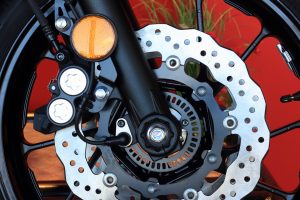
If they are worn down to a sliver or the indicator (if it has one), a new set will run $30 – $50. If you need a bike shop to do the job, check the condition of the brake lines also. If they are cracked or leaking, they must be replaced.
This could be expensive as you may want a mechanic to do the job. They may charge $60 (an hours worth) to do this job. The back brakes may be disc or drum. If they are disc, the same things as the front should be considered.
If they are drum brakes (actual pads are inside of the wheel hub), check that the wear gauge marker is still in the useable range.
Typically, the rear brakes don’t wear as fast. If they need to be replaced, the costs would be fairly similar to doing the front brakes.
Electrical System
Start the bike a few times. Make sure the starter engages solidly every time. If the bike is starting slower each time, it may be time for a new battery which may run about $100.
Check all of the lights including turn signals, headlight, high beam, tail light, brake light and all idiot lights in the cockpit.
Forks
Inspect the forks carefully. Check for pitting (small rust marks) on the sliders. If the rust is excessive, it may cause the fork seals to wear out, cause leaks, and eventually ruin the forks.
Minor pitting can often be sanded clean with a fine grade sandpaper. Next, make sure there isn’t oil leaking from the dust covers. While holding the front brake, rock the bike back and forth compressing and extending the forks.
Make sure the motion is smooth and the forks aren’t binding. Check for oil leaks again. The seller may have cleaned off the oil before you got there!
Oil
Ask the seller when the oil was last changed. “I don’t know” or “can’t remember” is an indication of neglect. Check the oil by running the bike for a few minutes, turn it off and check the level.
If it’s low, check for possible crankcase leaks under the bike. Check the color. A good running machine or a recent oil change will be tan in color. If it’s black, it’s definitely time for a change.
Also, touch it and rub it between your fingers. It should feel smooth and clean. A gritty or sandy feel could indicate some internal damage or wear like worn rings.
Ever Been Crashed or Down?
Ask the seller if the motorbike has ever been crashed or dropped. A respectable biker will tell the truth. The point is merely to see if he/she is possibly hiding something.
If a bike has crashed, it will usually slide down the road on its side rubbing on parts like mirrors, brake/clutch levers, foot pegs, side engine cover, and exhaust pipes.
If the answer is yes, ask the owner for details to get an idea if possible frame damage is present. Also, ask the seller or your friend (remember, the one you brought along?) to hold the bike up straight.
From the rear, check to make sure the rear tire looks straight, side to side, and top to bottom. Then, with you facing the bike, hold the front tire between your legs and put your hands on the grips.
Everything should line up nice and straight. If the handlebars seem crooked, the forks may be bent or the triple clamps (two triangles that hold the forks to the frame) may be twisted due to a crash.
Bent forks may require replacement and more importantly will make the bike UNSAFE!!
Start the bike
Start the bike and let it warm up. Check for a smoke. Excessive smoke may be an indication of internal damage or wear. Now we’re talking big money! Check the temperature (if it has a gauge).
If the bike is water cooled, it should go up to the middle of the range, maybe slightly higher since the bike is just standing there. After a few minutes, the fan should come on and lower the temperature again.
Check the coolant and make sure there isn’t any rust. There should be some greenish color indicating the presence of anti-freeze. Yes, even in warmer places the bikes have anti-freeze because the anti-freeze also protects against rust.
Listen for anything unusual. The bike should idle smoothly also. If the bike won’t stay on or has a very rough idle, the jets in the carburetors may be gummed (clogged) possibly from sitting for a long period of time.
Rebuilding or cleaning the carbs or jets is also quite costly if you have a mechanic do it depending on the bike. Parts are usually pretty cheap but it’s labor intensive.
The Test Ride
I think a test ride is a vital part of buying a used bike. You wouldn’t buy a car without a test drive, would you? Unfortunately, you’re forced to buy most new bikes without a test ride.
However, if this is going to be your first bike OR the bike failed a critical inspection like cracking tires, I suggest NOT going for a test ride. If the bike checks out clean and the friend you brought along is an experienced rider, ask if they could ride the bike.
It will tell you important facts like how the bike handles in a corner or if the tires have flat spots. Don’t go crazy.
You just want to get a feel for the motorcycle, not “let’s see what this baby ‘ill do!”. Obviously, make sure you wear all of the proper riding gear before getting out on the road!
Close The Deal
Make a reasonable offer taking into account any of the items noted during the inspection. Show the seller a copy of the listings that you previously checked in the web if they won’t take a reasonable offer.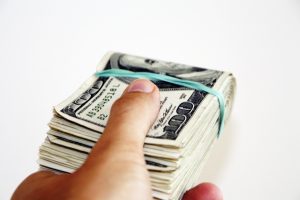
Once you’ve agreed on the price, now it’s time to discuss payment options. If the seller has the title and you’re ready to buy, check that their driver’s license matches the name on the title verifying that they are the owner.
If they can’t prove it, the deal is off! The bike may be stolen! If the seller doesn’t have the title because they are making payments to the bank and the bank is holding the title, call the bank and find out how to transfer the title.
Both of you may be able to go to the bank and transfer the title after you pay off the bank. If the seller says the title is just locked up at the bank, don’t give them any money!
While he goes to get the title, call the DMV with the VIN# and make sure the title is clean and does, in fact, belong to the seller.

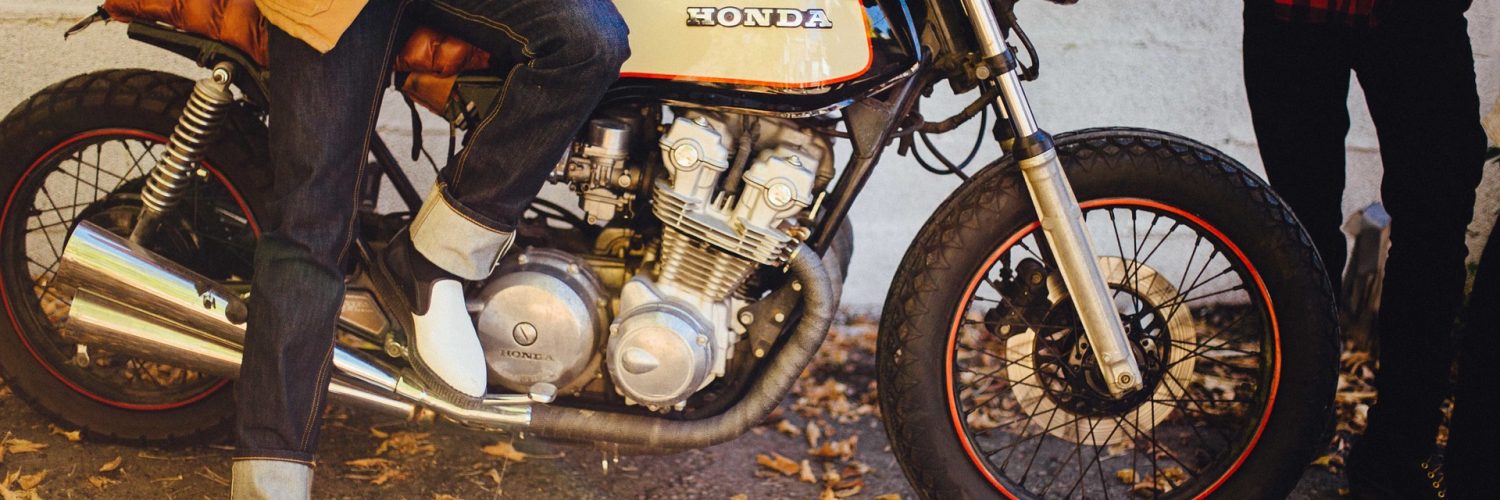
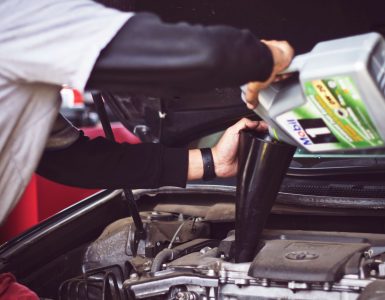
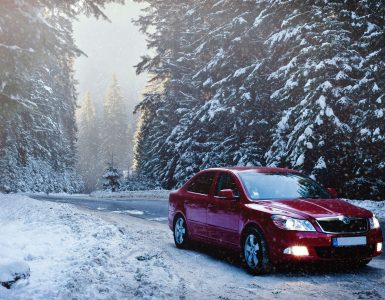

















Add comment